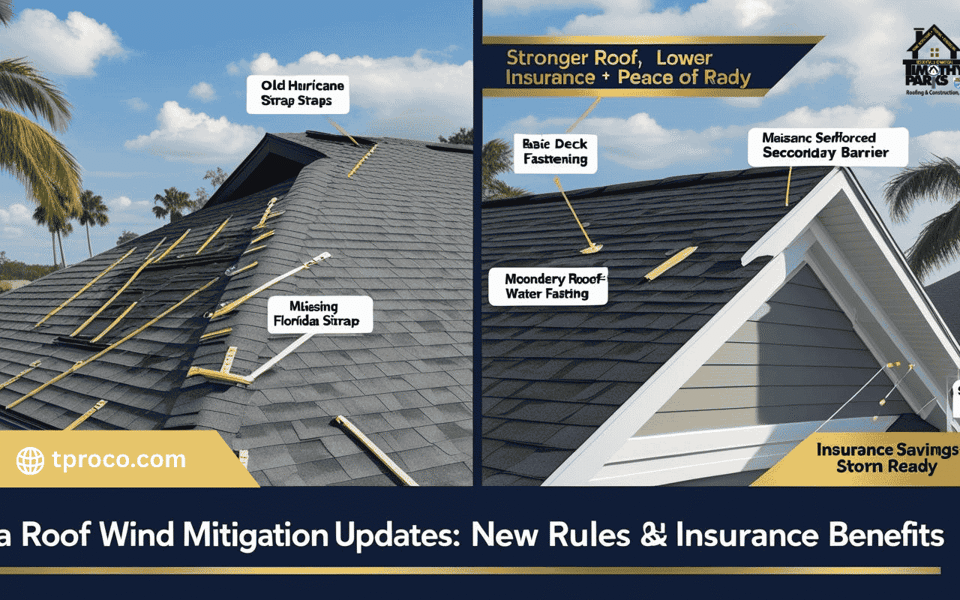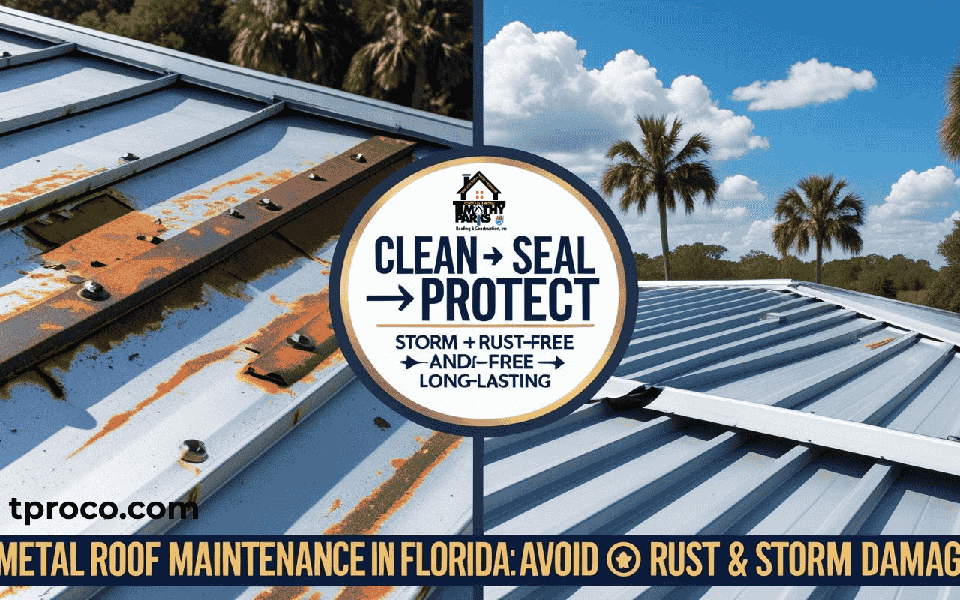Our Blogs
Insurance Claims for Older Florida Roofs: Navigating Age & Coverage Challenges 🏠
If your Florida home’s roof is 20+ years old, insurance claims after storm damage or leaks can get complicated. Carriers often apply actual cash value (ACV) coverage on aging roofs, factoring depreciation heavily. Plus, local building codes may demand code upgrades (like sealed underlayment or hurricane straps) that insurers won’t always cover fully. This blog details how to file claims for an older roof, handle adjuster disagreements, and explore “ordinance or law” endorsements. By understanding these nuances, you can avoid surprises if a storm rips off aging shingles or you discover a major leak in your decades-old tile system.

ACV vs. RCV Coverage for Older Roofs
Insurance policies handle roof claims in two main ways:
Replacement Cost Value (RCV):
Pays the cost of a new, similar-quality roof, minus your deductible. Ideal coverage if your roof is still within lifespan or you purchased a premium policy.
Actual Cash Value (ACV):
Deductions for age and wear reduce your payout. For instance, if your 20-year-old roof is valued at \$10,000 new, but it’s halfway through its life, you might only get \$5,000 (less deductible).
Many Florida insurers shift older roofs to ACV once they pass a certain age threshold—often 15 or 20 years. That means less money for total replacement, leaving homeowners to cover the difference. Before storm season, review your policy’s roof coverage type to avoid sticker shock after a major claim. If you still have RCV on an aging roof, consider confirming how long that lasts, or see if adding a roof endorsement is feasible. Knowledge is power when it comes to offsetting potential out-of-pocket costs.
Handling Adjusters & Depreciation Disputes
After filing, an adjuster examines your roof’s damage and age. Common sticking points include:
- High Depreciation Rate: They might claim your shingles have only 2–3 years left. This lowers ACV significantly.
- Maintenance Neglect: If the roof shows curling edges, algae, or many prior patches, adjusters argue it was already failing, thus reducing payout.
- Partial vs. Full Replacement: If only half the roof is damaged, they might only pay for that area. Florida’s matching laws may help you demand coverage for undamaged sections if no suitable match exists.
Combat lowball ACV estimates by presenting a roofer’s report on your roof’s remaining life or searching for documentation of recent maintenance. Photographic evidence of routine upkeep and a clean inspection can challenge the adjuster’s claim that it was “already failing.” If disputes persist, a public adjuster or attorney specializing in Florida insurance can advocate on your behalf, ensuring you don’t get shortchanged due to an overly pessimistic depreciation ruling.
Code Upgrades & Ordinance or Law Coverage
Florida’s building codes evolve quickly, especially for hurricane resilience. If an older roof fails, code likely requires upgraded underlayment, nail patterns, or hurricane straps. This can add thousands to repair costs—costs insurers won’t always pay under standard coverage.
- Ordinance/ Law Endorsement: This policy add-on covers code-related improvements, bridging the gap between a basic replacement and new code compliance.
- Without Endorsement: You might foot the bill for code-driven extras.
If your roof is older, verifying you have “Ordinance or Law” coverage is crucial to avoid big out-of-pocket expenses post-claim. It covers bringing the entire roof up to code, not just swapping in the same outdated system. Check your policy details or ask your agent. In Florida, ignoring code upgrades can lead to inspection failures or future coverage denial, so plan ahead.
Conclusion
🏠 Filing a roof damage claim on an older Florida home can be challenging, with depreciation, partial replacements, and mandatory code upgrades all affecting your final payout. Understanding whether you have ACV or RCV coverage, knowing your roof’s “true” remaining life, and carrying Ordinance or Law endorsements reduce surprises. Be prepared to negotiate if an adjuster’s depreciation seems excessive or if matching shingles are unavailable. Though older roofs often warrant lower insurance payouts, documenting upkeep and code compliance helps you secure a fair settlement. Ultimately, proactive planning and policy awareness ensure your aging roof doesn’t become a financial liability after a storm.
Frequently Asked Questions (FAQ)
🏠 Filing Insurance Claims for Older Florida Roofs? Read This First!
Older roofs face depreciation, code upgrade gaps, and tricky claim processes. Learn how to navigate insurance claims smoothly and protect your investment.
#tproco #tppro #tprci #urro #rrfl
#InsuranceClaims #OlderRoof #Depreciation #FloridaHomes #TampaCoverage #SunshineState
Schedule a Free InspectionAbout the Author

Timothy Parks
CEO
📢 Stay Informed: Communication & Consent Updates
At Timothy Parks Roofing & Construction Inc., we prioritize transparency in our communications. By submitting a request, you agree to receive calls, texts, and emails regarding our services. Standard messaging rates may apply. You can opt-out at any time by replying STOP or contacting us directly.
✅ Florida License: #CBCO59592, #CCC1327217, #HI4878
📌 Privacy & Terms: Read our Privacy Policy and Terms of Service.




